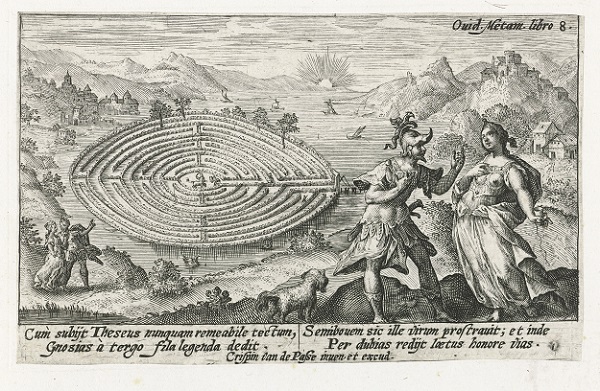Finding the thread

Two new publications on improving Search in Europeana Collections
 Theseus and Ariadne by Crispijn van de Passe, 1602 - 1607, Rijksmuseum, Public Domain
Theseus and Ariadne by Crispijn van de Passe, 1602 - 1607, Rijksmuseum, Public Domain
53 million paintings, books, newspapers, audio recordings and more; items from more than 35 countries, in more than 40 languages. Europeana's collections are rich - but with such immense and varied holdings, finding what you're looking for can be a challenge. Are you interested in Paris of Troy, or Paris, France? Venus the planet, or Venus the goddess? Danzig or ... Gdansk? Whatever the question, Europeana probably has the answer. But locating the items that you want and need isn't always as easy as it should be.
On 30 October of last year (2015), we published The Search Improvement Plan, outlining the steps we intended to take in the immediate future to improve the search performance of Europeana Collections.
Today we are pleased to announce a double publication. The first of these is a status report on the progress of the Search Improvement Plan. Alongside this we are also publishing our Search Strategy White Paper, setting these improvements in context and describing our broader vision for the future direction of search within the Europeana platform.
In terms of results, the news is mixed. Significant improvements have been made but in some cases these improvements were not as great as hoped. The foundations for the Entity API that stands at the heart of Europeana's planned information architecture have been laid. Our query testbed now covers almost all official EU languages, and several unofficial languages as well. A new relevance algorithm (BM25f) has been deployed. But technical limitations connected chiefly with the responsiveness of our backend data stores and our logging framework have meant not all changes could be implemented as planned. Notably, the ambition of improving our search-ranking effectiveness by 50% has not been met, with an increase of 24% being attained. Some work remains to be done here, although the process of sorting out these technical obstacles has begun and the way forward is clearer.
This development works to support the larger reconceptualisation and transformation of Europeana's search functionality as described in the Search Strategy. While this document is intended to be relatively long-term and wide-ranging, the theme that emerges from its apparently disparate concerns is that search is to become deeply user-centred. At the most immediate and obvious level, this means making improvements to the user interface (UI) and user experience (UX) of the portal. More fundamentally, it means leveraging user interactions to inform search behaviour - with search results being derived not just from query terms but from implicit user information such as clickstream data and explicit user feedback such as annotations and user-created collections.
User-informed search in this conceptualisation becomes not so much a single act of information retrieval, as a kind of dialogue between users and our content, in which our platform anticipates the needs of our users, satisfies them and sometimes even surprises them with 'unknown unknowns', the knowledge they didn't realise they had to have.
Interested in finding out more about search? More information can be found in the blog posts below.
